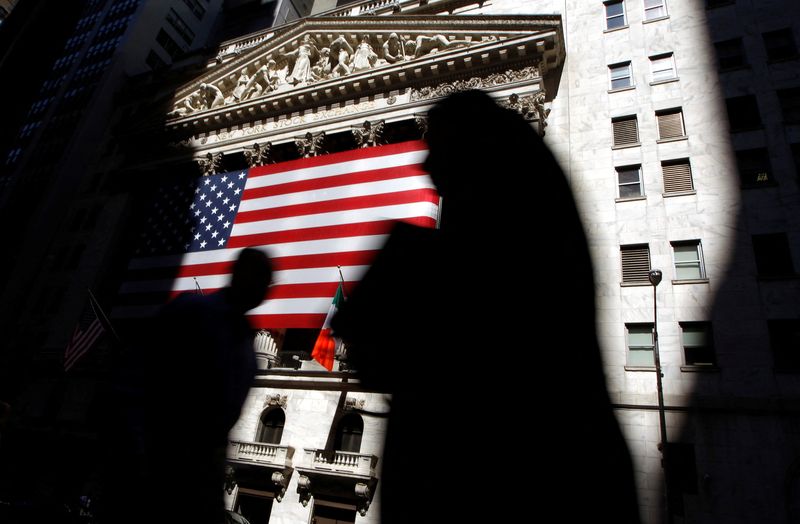Moody’s downgrades Senegal to Caa1 amid rising debt concerns
Investing.com -- U.S. stock futures edged broadly lower on Wednesday following a day of losses on Wall Street that dragged the Dow into negative territory for the year. U.S. 10-year Treasury yields, meanwhile, continue to climb, adding to a recent surge that has challenged equities and hit a range of global currencies. Elsewhere, Kevin McCarthy is ousted as House Speaker, leaving the lower chamber of the U.S. Congress leaderless with a November government funding deadline looming.
1. Futures point mostly lower
U.S. stock futures were broadly lower on Wednesday, paring back some early declines, as investors eyed a surge in Treasury yields to their highest levels since 2007.
At 05:03 ET (09:03 GMT), the Dow futures contract edged down by 16 points or 0.1%, S&P 500 futures shed 7 points or 0.2%, and Nasdaq 100 futures lost 40 points or 0.3%.
All of the main indices on Wall Street slumped by more than 1% on Tuesday after stronger-than-anticipated job openings data sent U.S. bond yields soaring, weighing on equity valuations (more below). Yields typically move inversely to prices.
The 30-stock Dow Jones Industrial Average posted its worst day since March and the benchmark S&P 500 touched its lowest mark since June. The biggest daily decrease came in the tech-heavy Nasdaq Composite, which fell by 1.9%.
Following the losses, the Dow is now in negative territory this year. However, the S&P 500 and Nasdaq are still up by 10% and 24%, respectively, in 2023, thanks in part to an artificial intelligence-powered surge in tech stocks earlier in the year.
2. U.S. bond market turmoil's global impact
The recent spike in U.S. Treasury yields took its toll on global bond markets on Wednesday, as traders came around to the idea that interest rates may stay stubbornly elevated for some time.
By 05:06 ET, the benchmark 10-year U.S. Treasury yield had edged up by 0.01 percentage points to 4.80%, just under its highest level since mid-2007. The 30-year yield fell by 0.01 percentage points to 4.93%, although it remained close to a mark last seen before the financial crisis.
The jump in U.S. yields was felt in Germany, where the country's key 10-year government debt yield climbed to its highest point since 2011. Japan's central bank also announced that it made unscheduled bond purchases, as yields on government debt spiked and authorities flagged that they were watching market movements with urgency.
Currencies were also rocked as the surge in yields pushed up the U.S. dollar, with the euro trading near 10-month lows and sterling hovering around a seven-month trough against the greenback. The yen in Japan was under pressure as well.
"It's messy out there," analysts at ING said in a note. "It's clear [...] that Treasuries are a dominant driver [...] It's pulling other yields higher, is hurting equities, and is pretty immune to influence from risk off."
3. More labor market data ahead
Attention is turning to the release of fresh U.S. labor market figures over the rest of the week, with private payrolls data due out on Wednesday and the crucial jobs report set to be published on Friday.
Economists expect the ADP National Employment report to show that private payrolls increased by 153,000 in September, down from 177,000 in August. This decline may indicate that the job market in the world's largest economy is beginning to weaken, a trend that could relieve upward pressure on wages and subsequently help cool inflation.
However, the recently growing narrative of a slowing labor market in the U.S. was dented by data on Tuesday showing that job vacancies -- often viewed as a proxy of demand for workers -- unexpectedly rose in August. The number bolstered bets that the Federal Reserve will choose to keep interest rates higher for a longer period of time.
The all-important monthly nonfarm payrolls report at the end of the trading week will likely flesh out the jobs picture. The U.S. economy is expected to have added 163,000 roles last month, slipping from 187,000 in August.
4. McCarthy voted out as House Speaker
Kevin McCarthy was ousted as the Speaker of the House of Representatives, making him the first lawmaker in the history of the lower chamber of the U.S. Congress to ever be removed from the position.
Following an internal spat with his Republican colleagues, McCarthy lost a roll call vote by 216-210, with eight GOP members joining 208 Democrats to strip him of the speakership.
Hardline Republicans, led by Florida Congressman Matt Gaetz, were disgruntled with McCarthy after he struck an eleventh-hour deal with Democrats over a stop-gap spending measure that temporarily avoided a government shutdown last weekend.
A vote on a new House Speaker is not expected until next Wednesday, giving Republicans -- who hold a slim majority in the chamber -- a week to find a potential leader. All other House business, including talks over government funding that is now set to expire in November, has been paused until then.
5. Oil drops as U.S. dollar strengthens
Oil prices dipped on Wednesday as the jump in the U.S. dollar threatened to make crude more expensive for buyers using foreign currency, potentially hitting demand.
By 05:09 ET, the U.S. crude futures traded 0.5% lower at $88.76 a barrel, while the Brent contract dropped 0.4% to $90.53.
The measures had ended the prior session slightly higher, recovering somewhat from three-week lows, as a persistently tight supply outlook partly offset demand concerns.
Traders will be monitoring a meeting of the Organization of the Petroleum Exporting Countries and its allies, known as OPEC+, on Wednesday. Saudi Arabia and Russia, two major members of the producer group, decided last month to extend output reductions until the end of the year.
